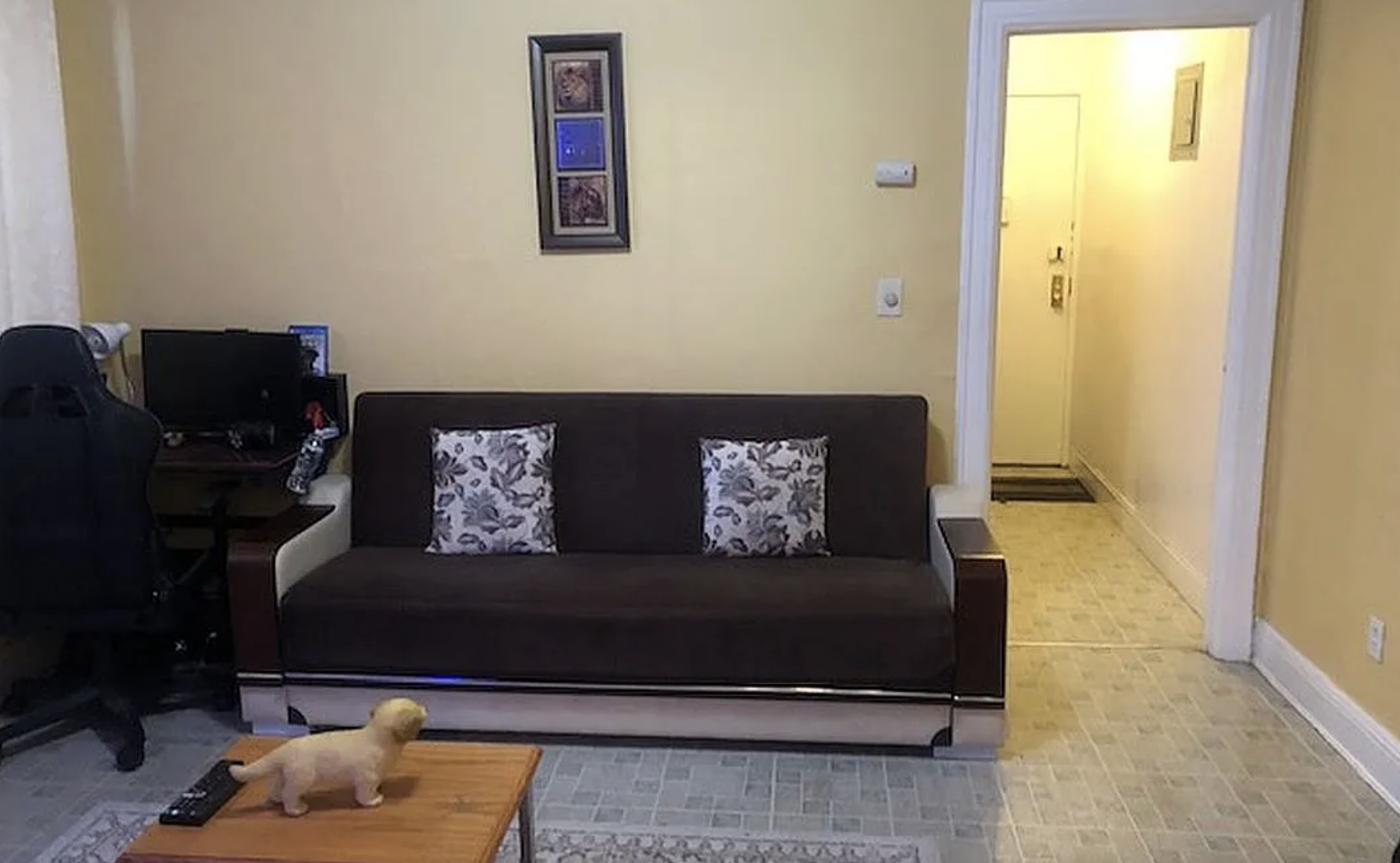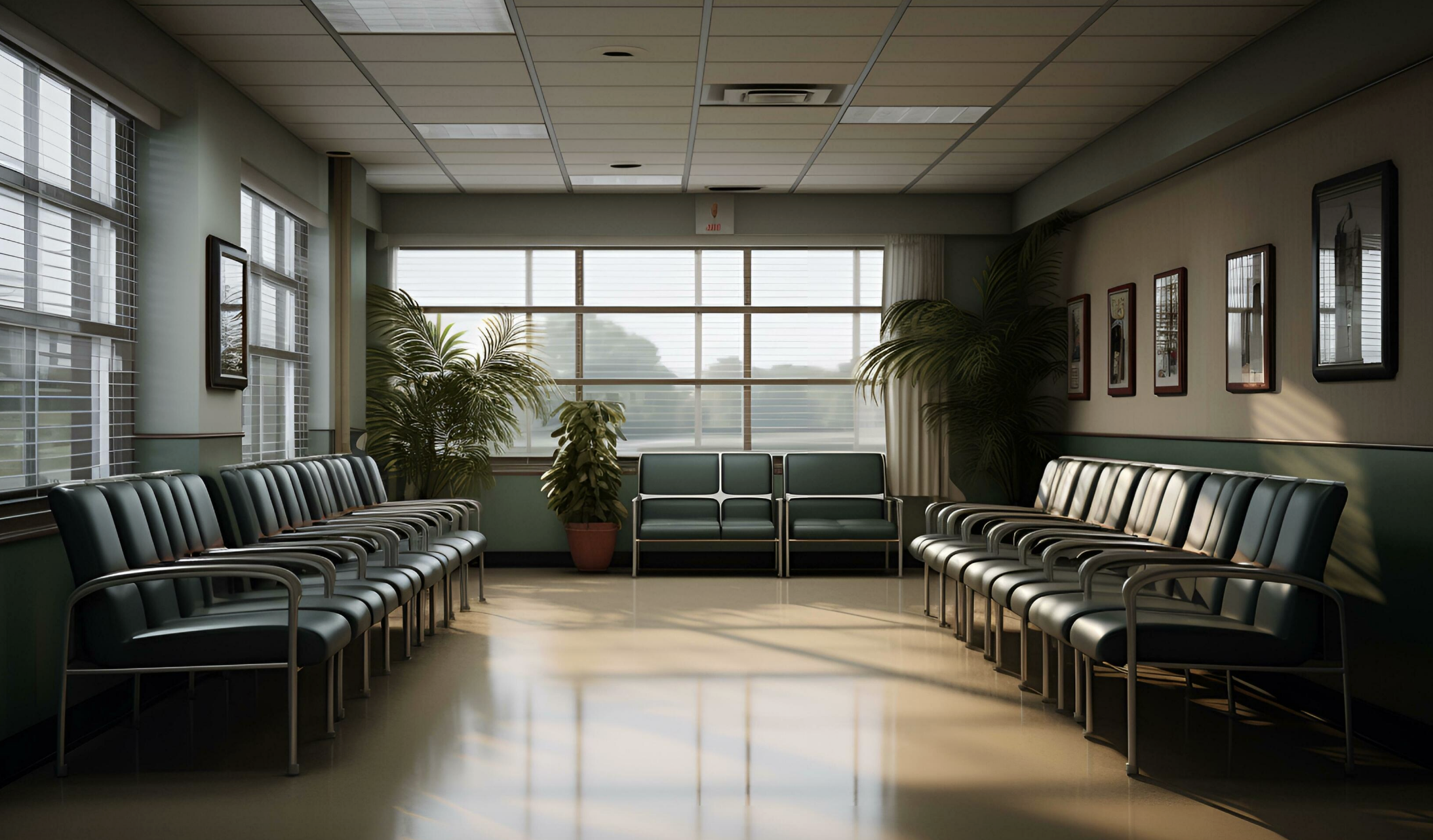WITHOUT CARE (4)
By:
November 16, 2025
First in a four-part series, by HILOBROW friend Colin Dickey, on “The Devoid,” a 21st century Gothic.

X.
Up to this point, I’ve been focusing primarily on spaces that invoke the Devoid for me; there are, though, also photographs that invoke it. That is, places that would feel perfectly normal to inhabit, but which, when photographed in a certain light, trigger a similar feeling.
One place one finds the devoid is, strangely, in real estate listings. Not those staged and photoshopped, which help the potential buyer imagine a life there, but in the hurried and haphazard cell phone photos of some listings. Here, one is given a glimpse into the private lives of others, but in the most disinterested manner possible.
Normally, when we look at photographs of a private home, it appears as either comforting — revealing and enlightening, giving us a glimpse of a domestic space, with all its trappings — or lurid, with an attendant sense of voyeurism. But the rushed, hurried real estate photographs that accompany certain listings defeat both of these impulses. Their effect is to render hidden, intimate domestic spaces as neither homey nor titillating, but simply as functional, a presentation of furniture and possessions that the viewer must see past. It is not quite unheimlich, uncanny, which Freud defined as the familiar made strange. Because nothing is particularly strange in these images. Rather, it is the familiar made empty, a hollowing out that is somehow even more unsettling.
XI.
The changing nature of photographic technology, its improvements through the years, helps in turn mark the age of a thing: a sepia-toned photograph, for example, speaks of an earlier era, just as a Polaroid does. This changing nature of photography speaks to what Walter Benjamin termed the photograph’s aura is the way it simultaneously brought you into immediacy with its subject while maintaining the distance of time. “What is aura, actually?” he asks in his essay on photography. “A strange weave of space and time: the unique appearance or semblance of distance, no matter how close it may be. While at rest on a summer’s noon, to trace a range of mountains on the horizon, or a branch that throws its shadow on the observer, until the moment or the house become part of their appearance — this is what it means to breath the aura of those mountains, that branch.” For the photograph, it is its ability to be bring the subject both present and immediate before us while keeping it perpetually distant from us.
Though, in an age of increasing digital manipulation, such aesthetic marks have come to also stand in for a nostalgia for those eras: we no longer can be sure that a sepia toned photograph is authentic, or if it is Photoshopped. In fact, one could say, the more art-designed a photograph, the more it telegraphs that nostalgia. Benjamin’s theory of aura may no longer work, as we reach a saturation point of ersatz antiquity. No longer is the faraway close; now the faraway is further away — what is close is nostalgia, which further obliterates history. Rather than trust an image to have its own time signature, its own index of the time of its creation, we look at photographs now to see how the creator intended to convey time. All images, now, are various expressions of either longing or recognition of the time that they invoke. This nostalgia, while false, nonetheless coneys a sensibility, an intentionality.
Which is to say, the most unsettling images now are those with no intentionality, no art direction, no attempt to root the image in a given time or place.
XII.

Ultimately, the question of the Devoid involves concerns that go beyond strange lobbies and stairwells, or haphazard real estate photographs. For a brief period, the Internet was a reliable repository of largely factual information — there was a great deal of misinformation, rumor, urban legend and similar falsities, but it used to be possible, to ask and at least attempt to answer the question: “Is what I’m looking at real or fake?” Now this is all being corrupted and undermined, and our collective sense of reality has been undermined. The question, “Is this real or fake?” has now been replaced by the far more pressing and vertiginous question: “By what ground could I even ask such a question?”
The new gothic responds to this — its domain is complete ambivalence; one cannot even determine who has led us to this point. Its existential dread comes from the inability to determine even how much human motivation is responsible for its creation. In its lack of intentionality, it responds to a moment that we find ourselves surfing in. We have entered a world without rationality or morality, in which the algorithm has emerged as the only kind of order possible.
What truly terrifies now is that which has no psychology, no motive, no psychosis. The truly empty, the blank. The terror here is not as with a ruin, where care has been abandoned, but in the inability to determine any kind of intentionality or motive in the first place. What had once terrorized by the suggestion of the human reclaimed by nature or otherwise inhuman, now mainly suggests the imitation by this simulacrum of human nostalgia or sensibility.
Increasingly, I believe, this sensation, what I have been calling the Devoid, will manifest itself more and more, not just in these spaces and images described here, but in the world of AI and LLMs, where we find ourselves swimming in an online environment generated by algorithms attempting to mimic humanity without any real clear sense of what that is. It is an online world created without intention, without aesthetic, without care.
WITHOUT CARE: I–III | IV–VI | VII–IX | X–XII.
MORE COLIN DICKEY at HILOBROW: IN THE MYSTERY CAVE (on Betty Boop’s Snow-White, Twin Peaks, and the erotic life of things) | KAIROS (Hermenautic Tarot series) | ANIMAL MAGNETISM (cross-posted series) | WIDESPREAD PANIC (Grok My Enthusiasm series) | ACÉPHALE (#Squadgoals series).
